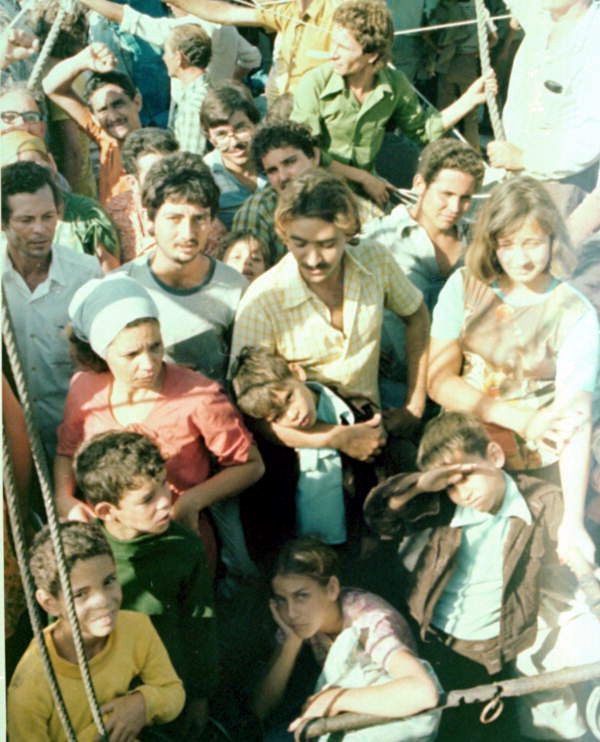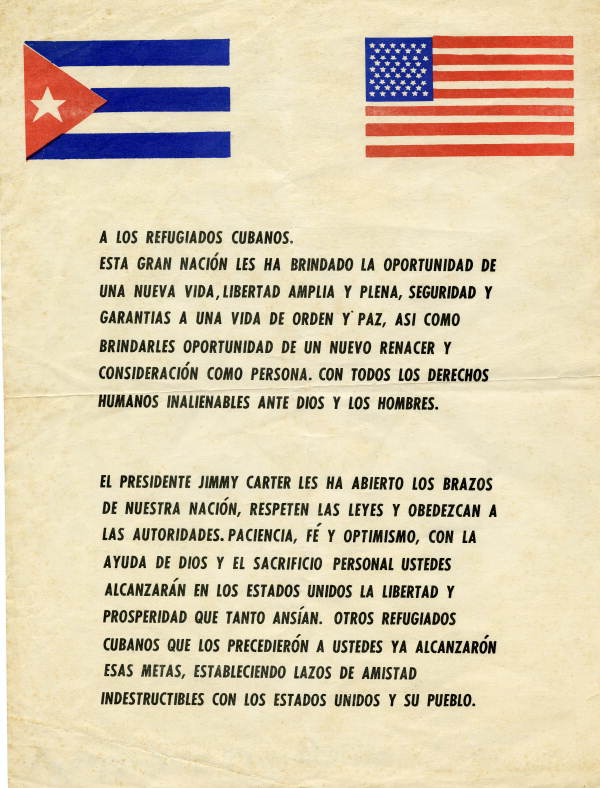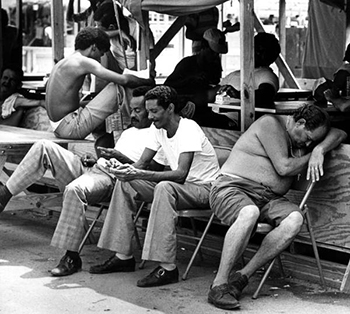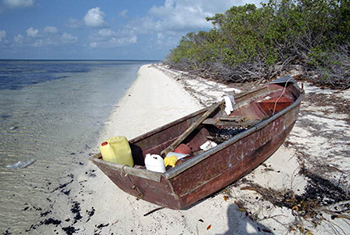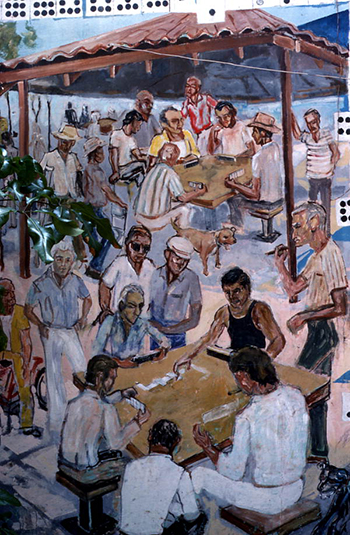The Cuban Experience in Florida: Revolution and Exodus
Photos and History
Marielitos and Balseros
By the late 1970s, over 700,000 refugees had fled Cuba for the United States. In 1978, tensions between the United States and Cuba thawed and a series of conferences, known as Dialogos (dialogues), took place between Cuban officials and prominent members of the exile community. The Dialogos resulted in the creation of a travel policy that allowed approximately 100,000 exiles living in the United States to visit Cuba.
Cuban refugee breaks down upon his arrival at Key West, Florida from Mariel, Cuba during the Mariel Boatlift (1980)
Image number: DM1349
The relaxation of Cuban-U.S. relations in the late 1970s inadvertently increased pleas from Cubans wishing to leave the island. In April 1980, amidst growing international criticism following an incident at the Peruvian Embassy in Havana, Fidel Castro opened the Port of Mariel to refugees wishing to leave Cuba. On April 20, hundreds of boats approached Mariel on Cuba’s northern coast. Cubans living in the United States chartered boats and made the perilous journey across the Florida Straits in hopes of finding their relatives. By May, the flotilla numbered in the thousands. Between April and October 1980, 125,000 Cubans left Mariel.
Cuban refugees on board boat during the Mariel Boatlift: Key West, Florida
Image number: DM1347
This latest wave of refugees, known as Marielitos, arrived in Key West aboard crowded vessels. Refugees with relatives already in the United States were the first to be processed and released. Those without relatives were relocated to tent cities in Dade County and detained for several months. Not all desiring to leave via Mariel made the journey; the Cuban government prevented many individuals from leaving during the boatlift.
Mariel Boatlift flyer
Image number: PR30565
To the Cuban refugees:
This great nation is offering you the opportunity of a new life, ample and full liberty, security and the guarantee of a peaceful orderly life, and is also offering you the opportunity of a rebirth and consideration as a person. With all inalienable human rights before God and the people.
President Jimmy Carter has opened the arms of our nation, respect the laws and obey the authorities. Patience, Faith (Trust, believe) and optimism, with the help of God and your personal sacrifices you will obtain in the United States the liberty and prosperity that you yearn for. Other Cuban refugees who preceded you have already reached those goals, establishing indestructible friendship bonds with the United States and her people.
Cubans already living in Florida generally looked down upon the Marielitos. Rumors circulated that Castro, wishing to rid the island of criminals, had simply opened Cuban jails and shipped the inmates to the United States. Popular films such as Scarface (1983) helped perpetuate this stereotype. Academic studies of the Marielitos proved these rumors to be exaggerated. In fact, only 4% of the Marielitos had criminal records. Of these, many had been imprisoned for political reasons.
Cuban refugees waiting for freedom (1980)
Image number: PR04715
In the summer of 1994, another refugee crisis emerged. Cuba’s economy had steadily declined following the collapse of the Soviet Union in 1989. Many Cubans desired to leave the island for the United States. Beginning in May, a series of incidents resulted in a flood of Cubans attempting to leave the island on hijacked boats and makeshift rafts. These people became known as Balseros (rafters). President Bill Clinton authorized the U.S. Coast Guard to intercept Balseros in the Straits of Florida. Clinton ordered that Balseros be taken to the American military base located at Guantanamo Bay. In total, it is estimated that about 35,000 Balseros attempted to leave Cuba for the United States. In late August alone, more than 10,000 Balseros were picked up in the Florida Straits. In 1995, all Balseros held at Guantanamo Bay were allowed entry into the United States. The decision by President Bill Clinton to admit the Balseros to the United States caused outrage among the Cuban exile community, similar to the initial reaction to the Mariel crisis of 1980.
Cuban refugee boat beached on the south side of the Marquesas Keys
Image number: DM3639
Socio-economic factors explain why members of the existing exile community resented the Marielitos and Balseros. The new refugees tended to be younger than their predecessors, and many belonged to the Afro-Cuban community. Cubans who left immediately following the revolution two decades before feared that the Marielitos and Balseros would damage their image in the eyes of the Americans. Over time, those that arrived in the 1980s and 1990s became part of the Cuban immigrant community. However, many of the racial and class divisions born in Cuba between the old and new refugees lingered in the United States.
Painting of Cuban American men playing dominoes in Little Havana: Miami, Florida
Image number: FS80118A
Cuban Culture in Florida
What is often lost amid the political history of U.S.-Cuban relations is the experience of ordinary Cubans forced to leave their homes and build anew in the United States. Cubans living in Florida recreated much of the diverse culture found on the island. The variety of historical experiences and cultural traditions that exist in the Cuban-American community are illustrated in this learning unit. Our goal in creating “The Cuban Experience in Florida” is to highlight the long history linking Florida to the island of Cuba, the immigrant experience both before and after the revolution of 1959, and to provide glimpses into the vivid expressions of Cuban culture evident in the Sunshine State.

 Listen: The Blues Program
Listen: The Blues Program
